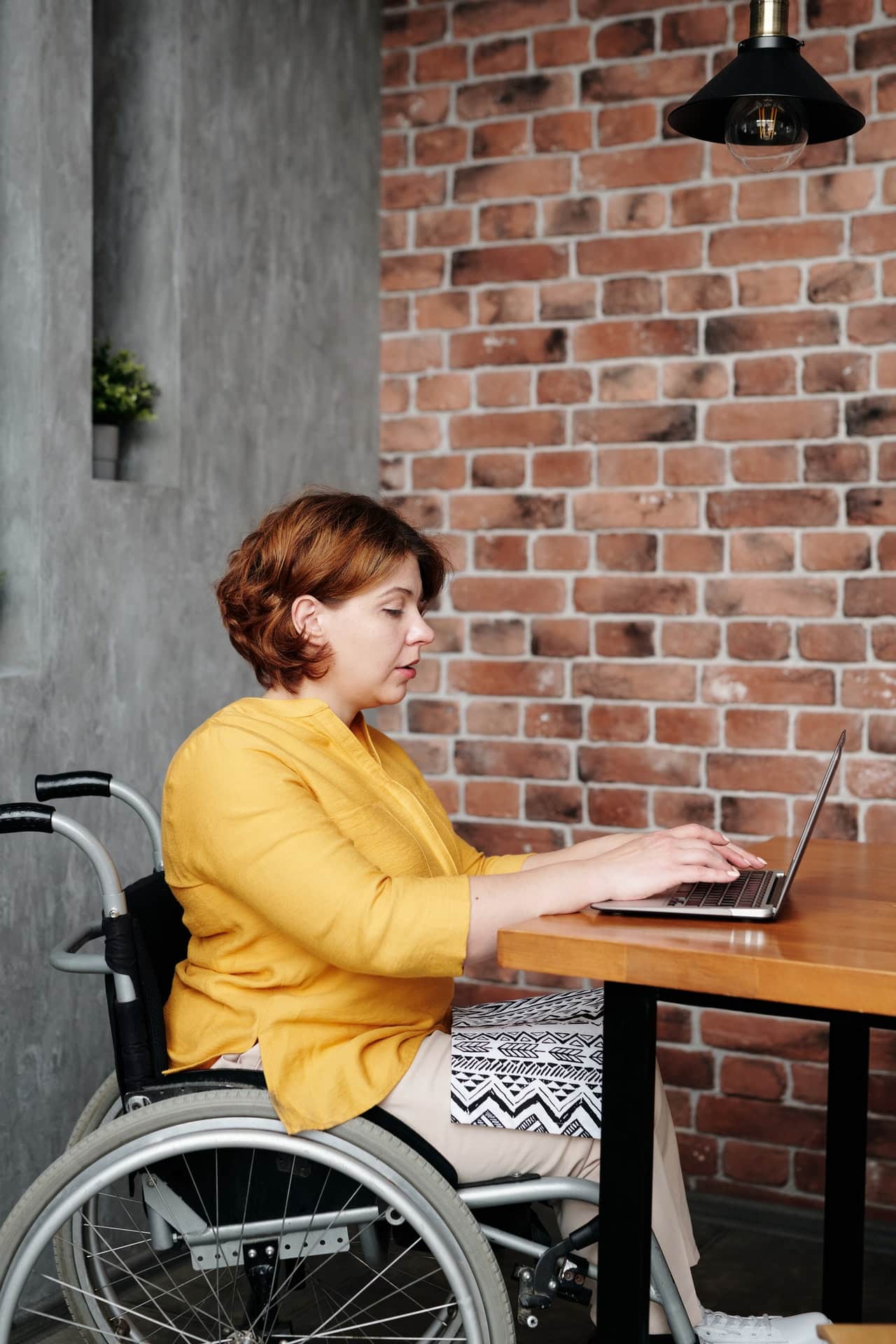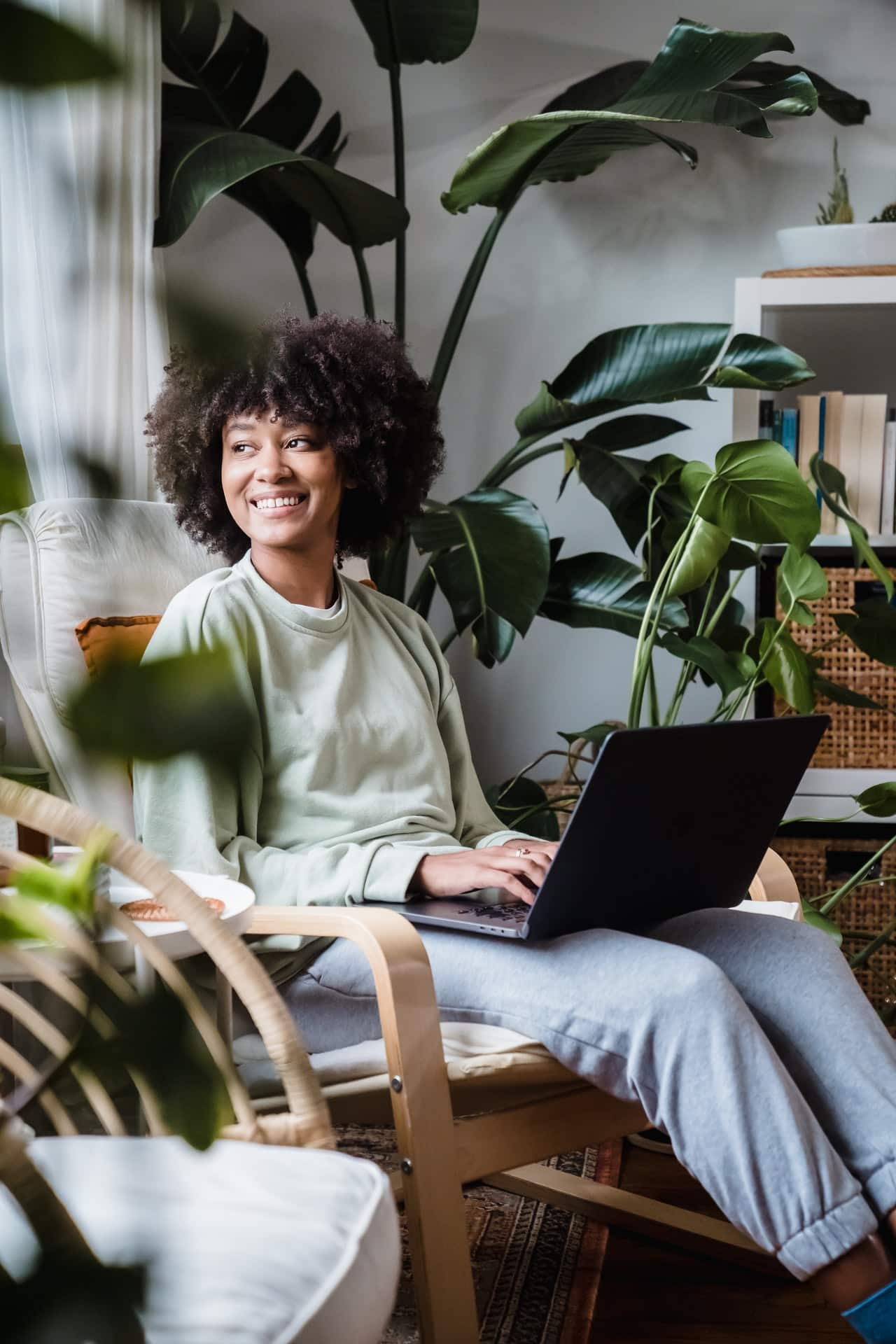Virtual therapy is here to stay. Although online therapy really took off during the pandemic, many clients and therapists are continuing to prefer video sessions even as offices reopen. There are many benefits to meeting with a therapist online, from convience and comfort to theraupeutic opportunities you might not have in an office setting.
Getting the most out of online therapy also requires a little bit of thought and planning. As a therapist who offers video therapy, AND as a person who attends virtual therapy sessions of my own, here are some of my best tips for getting the most out of therapy online!
Finding The Best Online Therapist For You
The first big question that comes up when considering online therapy is how to find a therapist who is a great fit. Great news — virtual therapy opens up a ton of options! You’re no longer limited to the therapists within a certain driving radius or near public transportation. In most cases, you can see any therapist who is licensed in your state, regardless of where they are located.

Where’s the best place to start? Personally, I always like to start with word of mouth. Asking friends or family for recommendations help you connect with someone great you wouldn’t otherwise find. (Some of the best therapists I know are not necessarily the best at maintaining their online presence!)
The caveat is that it’s sometimes not the best idea to see a therapist who your close friend or family member sees themselves. (Want to talk about your fight with your sister who sees the same therapist as you? Awkward! And potentially a conflict of interest for the therapist too.)
Many people do have success using the internet to find a therapist. In addition to just Googling “therapists near me”, there are a variety of therapist directories out there. Sites like Inclusive Therapists and Therapy Den will let you search therapists by their expertise, location, approach, or insurance. You can also look for certain personal characteristics like gender, ethnicity, religion, and more. Directories will allow you to search specifically for providers who offer online therapy in your area.
Looking for online therapy on a budget?
Try Open Path Collective, which offers a database of therapists who offer therapy at deeply reduced rates for people with a financial need. Locally, you may also be able to find non-profit clinics that offer services at lower rates, often using the services of pre-licensed clinicians working under supervision.
In this therapist’s humble opinion, these are both better budget options than online therapy juggernauts like Talkspace or BetterHelp. Sure, your favorite podcasters all seem to love them. But these big companies have fallen under scrutiny for concerns about data privacy, professional ethics, and shady labor practices. And my clients who have tried them complained of high therapist turnover rates. It’s sometimes difficult to see the same therapist for the long haul.
Preparing For Sessions
Add In Some Buffer Time
The commute to see a therapist in person may not always be the most convenient. But it does offer an opportunity to disconnect from work or family for a few minutes before and after a session. Clients often naturally use that break to think about what they wanted to talk about in session, or just get into the right headspace for therapy.
Fortunately, you don’t need to hop in an Uber and go around the block to replicate that extra bit of transition time for yourself for virtual sessions. You can create a pre-therapy transition ritual that’s even better at home, because it’s tailored to you and your comfort.
So first and foremost, plan a little buffer time into your day before your appointment whenever you can. Even ten minutes can make a huge difference. I recommend blocking that buffer time out on your calendar so that others don’t book anything over it, especially if you’re attending a session mid workday.
Set The Scene
When I work out of an in-person office, I’ve put a lot of thought and care into creating a space that’s pleasant and comfortable for my clients. But my taste and preferences may not be the same as yours! When you attend an online therapy session, you have a unique opportunity to really create a space and environment that feels healing for you.
Use the few minutes before your session to get comfortable. Light a candle or some incense if you like aromatherapy. Pour yourself a soothing cup of tea or your favorite non-alcoholic beverage. Grab a throw or a pillow. Adjust the lights the way you like them.
Depending on your space’s limitations, you might consider attending therapy sessions from a space that’s not your normal workspace. I like to attend my own therapy sessions from a favorite comfy chair in the corner. Even though it’s just a few steps from my desk, it helps me transition mentally from work mode to me-time.

Get Grounded
Some of my clients like to get ready for an online therapy session with a quick meditation to get grounded. Others prefer to jot down a few ideas about their agenda for the session, or review any progress or homework from last week. Whatever your preference, checking in with yourself in some way before you log on can help you start your session off with intention.
Yes, it’s 100% fine to show up to session just “as you are,” even when you’re scattered and all over the place. We can work with that too, and sometimes that might be just what you need! But taking a few moments to pause and get grounded can be empowering. You’ll show up with more clarity, and ready to get the most out of the limited time you and your therapist have together.
Pay Attention To Privacy
If you’re attending therapy from home, privacy might be easy — or it might be a big challenge. Thin walls, nosy roommates, kids who don’t know how to knock? They can feel like a privacy nightmare. Even if you do have a home that’s conducive to privacy, it can feel psychologically uncomfortable. Thinking of leaving your spouse? It can feel, well, weird to go into it with them in the next room.
A few tricks that have been helping with Stella Nova clients? First, if it’s possible, collaborate with partners, roommates, or family members to find a time you can be alone in the house. Some of my clients have partners who regularly run errands, take the dog to the park, or go into the office during our sessions. Partners can also help to make sure kids don’t interrupt you for the hour.
If you do have to share a tight space, a white noise machine can mask conversation quite effectively. It’s what therapists often use in our own offices to make sure no one can hear sessions from the waiting room. I like the portable kind made for babies; they’re cheap, effective and can be hung right off your doorknob. (Here’s an example of the type for reference, although I haven’t used this specific model.)

Pro-Tip…
White noise machines should always be placed outside the door of the room you’re trying to muffle. So if you’re having therapy in the bedroom, but your family’s in the living room, put the machine just outside the bedroom door. You may still be able to hear them, but they won’t be able to hear you. You can test it out ahead of time by playing a radio in the room and checking the sound coverage outside. Hearing it work can provide peace of mind.
Parked cars can be an alternative private space to attend session. Some clients attend session from right in front of their house, others go to a lot in a safe location. You may want to do some reconnaissance ahead of time to ensure that your cell phone signal or hot spot works.
Finally, if you’re having trouble achieving privacy for online sessions, let your therapist know! We want to help troubleshoot and probably have helped clients navigate similar situations in the past. Privacy is a must for getting the most out of online therapy.
After the Session
Remember that buffer time we talked about having before an online therapy session? Well, it’s just as useful after the session’s over — maybe even more so. You don’t want to log out of therapy and immediately head into a Zoom presentation or a performance review without a buffer.
Having another few minutes to transition back to the “real world” after your session is valuable to allow space for reflection. One of my clients likes to take a walk after her session to have some quiet time to think. Others have found this is a good time to jot down a few notes about their takeaways from the day.
You may also find yourself needing some extra self-care after some sessions if you get into heavy or difficult topics. Therapy can be exhausting sometimes! You might need a break, a nap, or even a good cry.
The good news is that therapy sessions usually last 45-50 minutes. If you’re attending therapy from your office or while working at home, it’s a natural buffer before your next meeting. If you’re going back to other responsibilities, try planning building in some post-therapy down time in your schedule.
Let Go Of Perfect
Here’s the thing: Therapy, among other things, is an opportunity to let go of perfect and practice acceptance. If these tips and suggestions are feeling more stressful than supportive, ditch them and do your own thing. Or come up with your own strategies! It’s great to optimize your experience to get the most out of online therapy, but it’s also great to show up as your messy self.
About the Author
Dr. Maya Borgueta is a clinical psychologist who offers online therapy for women and nonbinary professionals. As the founder of Stella Nova Psychology, she provides services online for clients throughout California. Maya specializes in working with tech and business professionals, women of color, 1st and 2nd generation immigrants on anxiety, self-worth, and professional burnout.
Online Therapy in California
Stella Nova offers online therapy in San Francisco, Los Angeles, and throughout the State of California. We serve women and nonbinary professionals as well as couples. Our team of stellar psychologists and therapists specialize in a variety of clinical issues. We offer therapy for anxiety, depression, professional burnout and work stress, perinatal mental health concerns, chronic pain, and more.
Looking to connect with the best online therapist for your particular needs and preferences? Schedule a free, 20 minute phone consultation to get matched with someone who can help.


